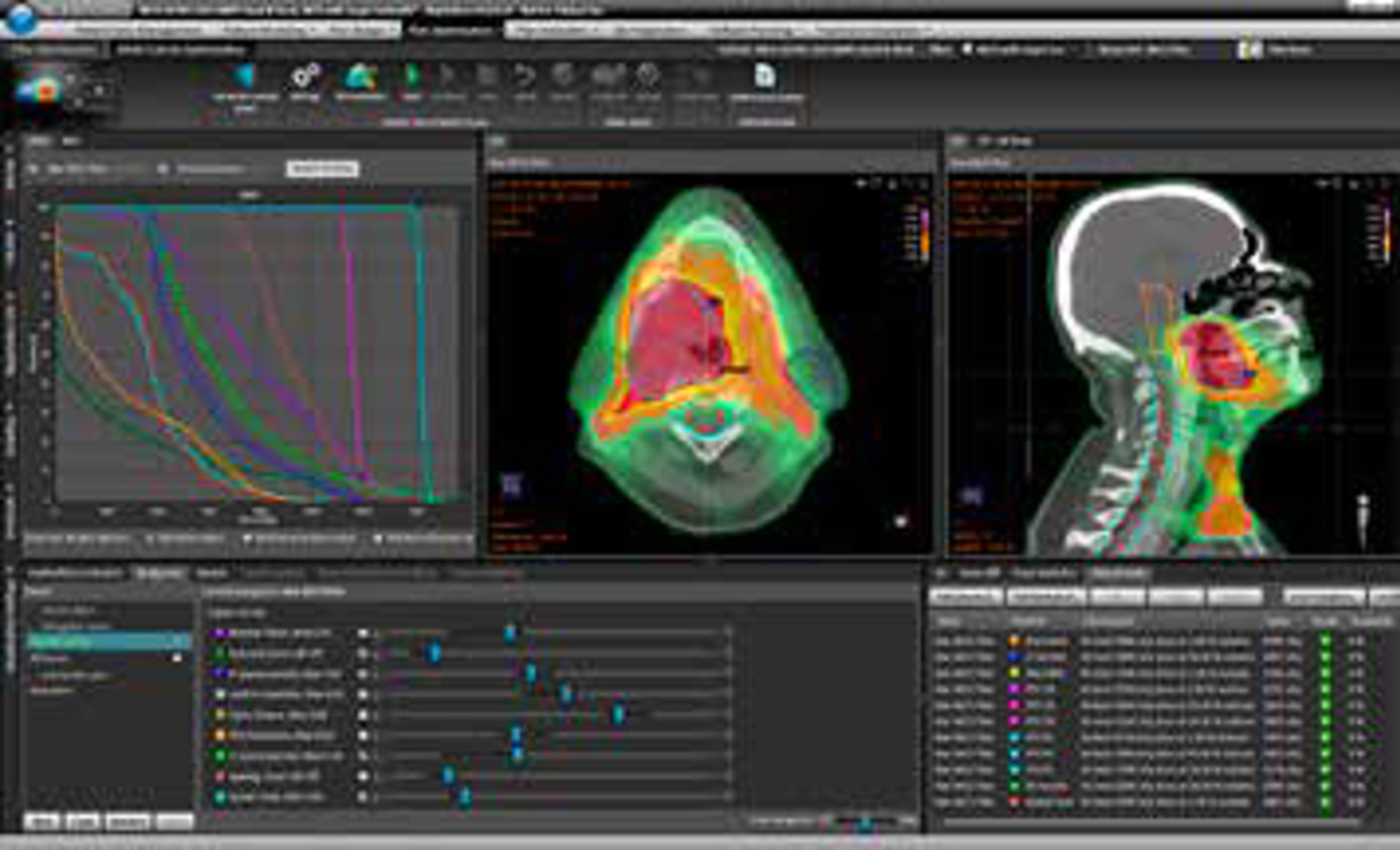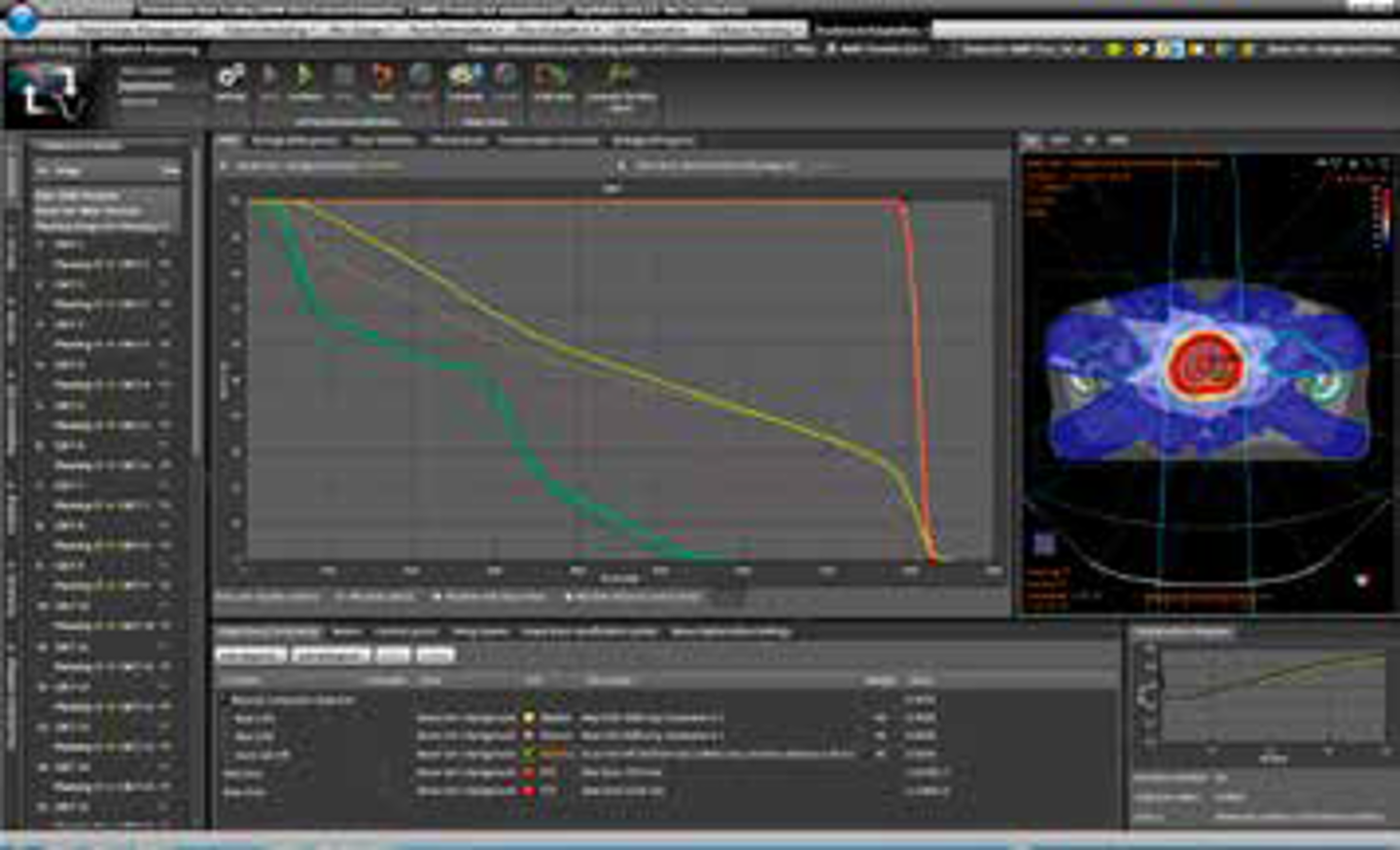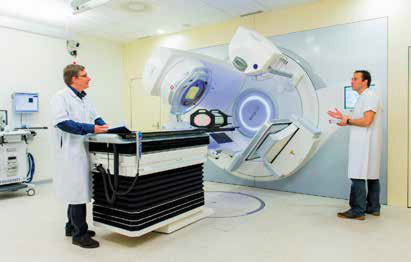Over 80% of our patients are treated with VMAT, even in cases with metastases. VMAT has several advantages, for example, plans are highly modulated and with high accuracy.”

Case Study: L’Hôpital Riviera
A NEW RADIATION ONCOLOGY CENTER BUILT AROUND VMAT AND RAYSTATION

Oscar, what were your ambitions with the new radiation oncology center at l’Hôpital Riviera?
- To begin with, we decided that the goal was to treat with Volumetric Modulated Arc Therapy (VMAT). The workflow for VMAT is very straight forward, and as a result, we get higher patient throughput than with other methods. VMAT is simply the best method for our linac. Since we come from a background using Tomotherapy at a university hospital, we had the experience and benefit of this method in mind when building the new center. Our focus is to employ the latest technology for the benefit of our patients, which is why we partnered with RaySearch Laboratories.
How would you describe the process of getting started with RayStation at the new center?
Proton therapy requires a very high level of focus and treatment planning technology. Intensity modulated proton therapy (IMPT) in RayStation allows for quick, efficient, robust and adaptive planning for effective proton treatments.
- We actually achieved great results from the beginning and treated more patients than expected; after just one month we treated about 20 patients per day on average. The fact that all modules for contouring, delineation, fusion and plan validation are available in a single software improves the workflow tremendously as the doctor and the physicist can work within the same software. We particularly appreciate the well designed and easy-to-use interface, the wellthought workflow, and the Citrix solution making it possible to work from anywhere.
You treat most of your patients with VMAT?
- Over 80% of our patients are treated with VMAT, even in cases with metastases. VMAT has several advantages, for example, plans are highly modulated and with high accuracy. VMAT provides the optimal workflow with our linac and we have now developed a streamlined process where we treat 46 patients a day with one machine. I’m not aware of any other clinic that treats their patients with VMAT to this extent.
Dosimetric quality is excellent, dose fall-off is really steep. I see this in daily practice where 2/3 of our prostate patients show zero toxicity and do not develop any side effects. These plans are a new paradigm compared to a few years ago!”


What do you think about the quality of the plans?
- Dosimetric quality is excellent, dose falloff is really steep. I see this in daily practice where 2/3 of our prostate patients show zero toxicity and do not develop any side effects. These plans are a new paradigm compared to a few years ago!
Are you relying on any particular features in RayStation to improve your workflow?
- We have started using Multi-criteria optimization (MCO) clinically in prostate and palliative cases. As part of this effort, we conducted a study of the MCO feature where we have made two plans for our real clinical cases, one with the standard approach and one with MCO, and then compared the plans. MCO gives dosimetric results that are at least as good as or better than the standard modulated plan with a shorter planning time.
With MCO, there is no time-consuming iterative process with the plans going back and forth between the doctor and the physicist. You make the plans together. The consequence is that doctors, physicists and dosimetrists are working together, having an ongoing dialogue, with an effective alignment of objectives as a result.
We are also looking into adaptive planning in some special cases, for example when the tumor moves or when the patient loses weight.
How will you continue to develop your center?
In 2017, we will merge six of our current hospitals into a new larger single center. At the new center, we will fuse the medical and radiation oncology departments so that they work side-by-side. We will also increase the number of linacs. We look forward to continue adapting the latest technology and staying innovative through our collaboration with RaySearch Laboratories.
For more information or to see a demo, contact sales@raysearchlabs.com
